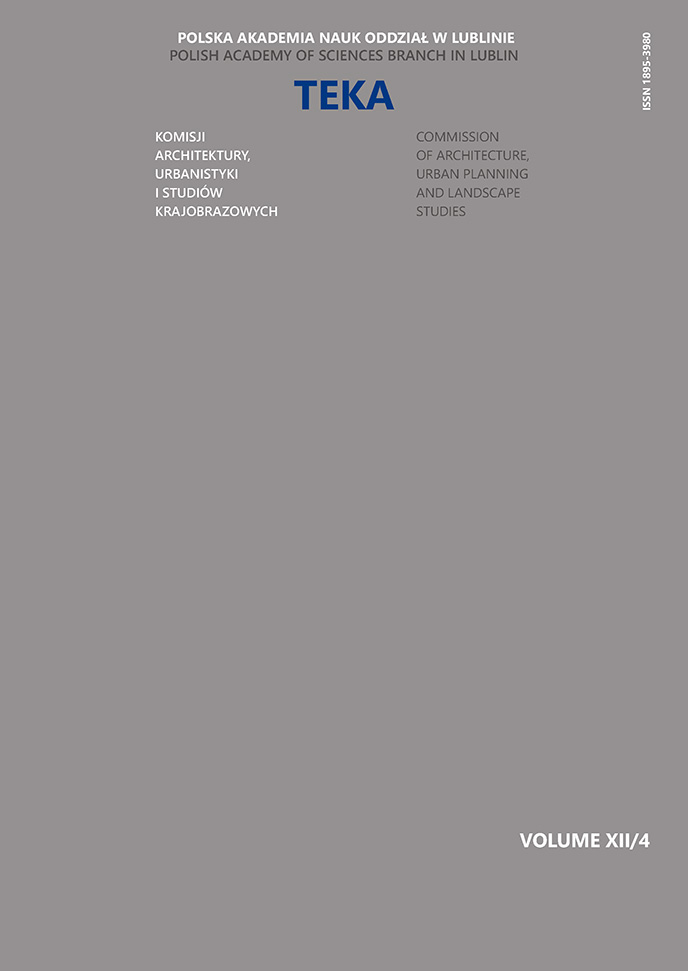The universality of space and public facilities in the context of people with sight dysfunction
Main Article Content
DOI
Authors
Abstract
A disability is very often associated with motor dysfunction, while visual, hearing or psychological dysfunctions are not rooted in the society awareness. Visual dysfunctions like motor disorders are a natural stage of the aging process. The lack of adaptation of public space and public facilities for the visually impaired or blind people is often a barrier for them. This article presents methods to help people with vision disabilities use public facilities and spaces. The article was divided into two parts. The first covers architectural and building solutions - pointing out the basic principles in architectural design and pointing to some of the mistakes emerging in buildings that may endanger the lives, safety or mental well-being of people with vision dysfunctions. These architectural solutions may influence the orientation in the space or reception of the incentives in architectural environment, but they are not always the detailed information system. The second part of the article is devoted to the typhlographic techniques used in public space as a form of small architecture or a detail – complement of architecture. These solutions give more accurate information such as the facility’s communication system or utility information. Both parts of the article presents architectural and design solutions in order to enable visually impaired people efficient and safe use of space or building. They also point to the fact that design with regard to visually impaired people should begin at the functional and spatial concept, and include the detail and solutions in the executive project as well as proper spatial management.


